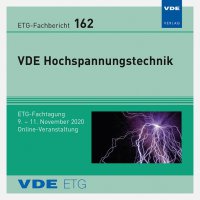Localization Algorithm Based on Reflection Coefficient Function Measurements for Internal Incipient and Short Circuit Faults in Transformer Windings
Konferenz: VDE Hochspannungstechnik - ETG-Fachtagung
09.11.2020 - 11.11.2020 in online
Tagungsband: VDE Hochspannungstechnik
Seiten: 6Sprache: EnglischTyp: PDF
Autoren:
Seifi, Sahand (Leibniz Universität Hannover, Institute of Electric Power Systems, Division of High Voltage Engineering and Asset Management, Schering-Institute,Hannover, Germany & University of Tehran, School of Electrical and Computer Engineering, High Voltage Institute of University of Tehran, Tehran, Iran)
Rahimbakhsh, Mahdi (Leibniz Universität Hannover, Institute of Electric Power Systems, Division of High Voltage Engineering and Asset Management, Schering-Institute,Hannover, Germany & ENERCON GmbH, Wobben Research & Development Electrical Engineering, Bremen, Germany)
Werle, Peter; Gockenbach, Ernst (Leibniz Universität Hannover, Institute of Electric Power Systems, Division of High Voltage Engineering and Asset Management, Schering-Institute,Hannover, Germany)
Shayegani Akmal, Amir Abbas; Mohseni, Hossein (University of Tehran, School of Electrical and Computer Engineering, High Voltage Institute of University of Tehran, Tehran, Iran)
Hinrichs, Thomas; de Boer, Joachim (ENERCON GmbH, Wobben Research & Development Electrical Engineering, Bremen, Germany)
Inhalt:
Incipient inter-turn faults and mechanical winding failures are two common types of failure in power transformers as one of the most important equipment in the electrical power system. These faults could result in the winding destruction and even the transformer explosion in sequence. Therefore, these winding defects should be detected in early stages before leading to an unplanned outage or high consequential costs. Transfer function measurement as a frequency response analysis has been widely accepted as an effective method for the detection of such defects; however, despite a lot of efforts, no approved method has been introduced to localize these defects using this frequency response measurement. Therefore, the authors have suggested the reflection coefficient function as a new frequency response for localization. The method is based on a two steps investigation approach. In the first step, the type of fault will be determined. Then, based on the type the fault, different techniques will be utilized for localization. The ability of reflection coefficient function for distinguishing the type of different resistive and capacitive faults between turns or between turn and ground has been already investigated by the authors. In this contribution, the reflection coefficient function is utilized to localize the inter-turn faults like resistive and capacitive and their combination between two adjacent disks.


